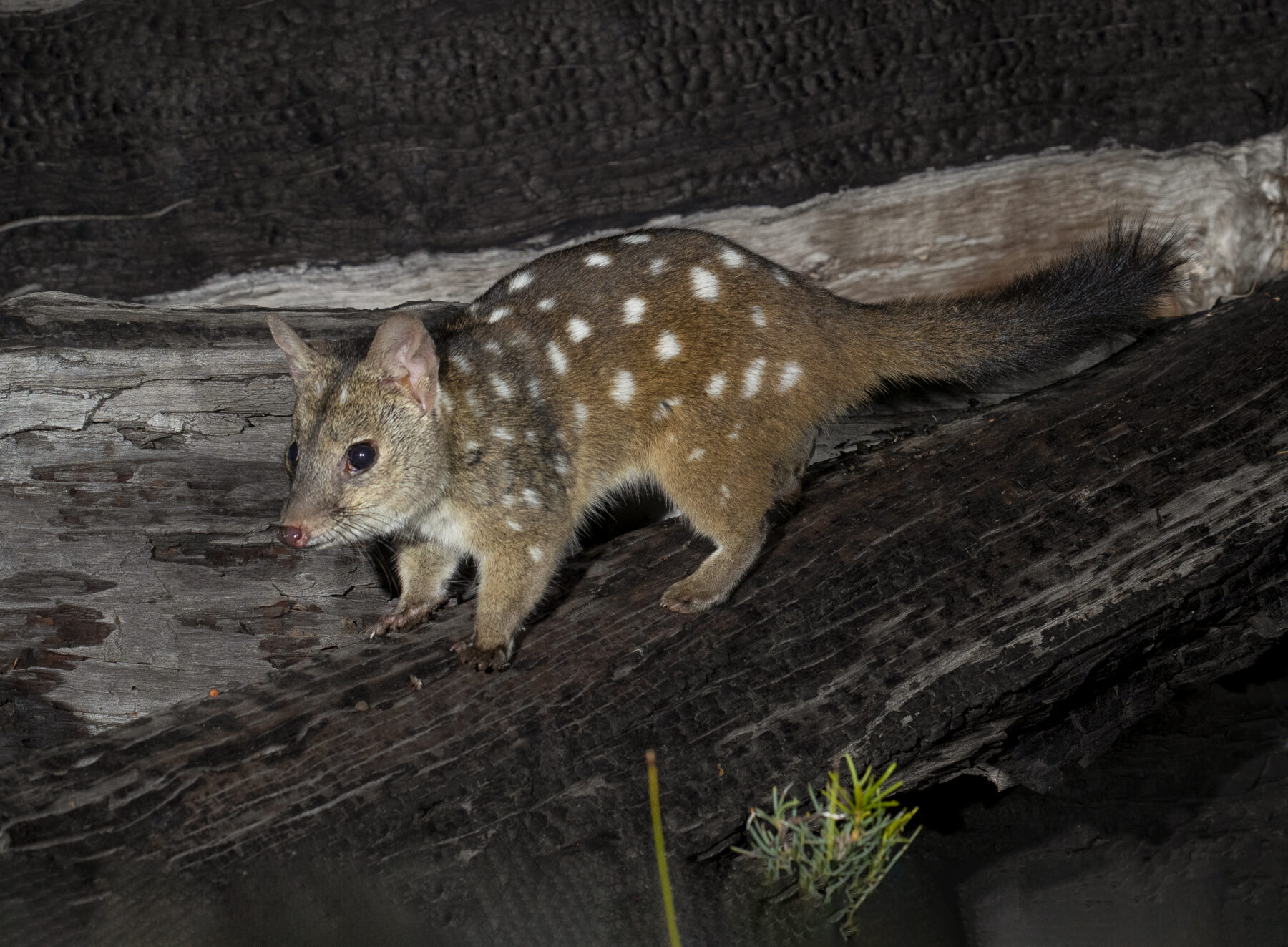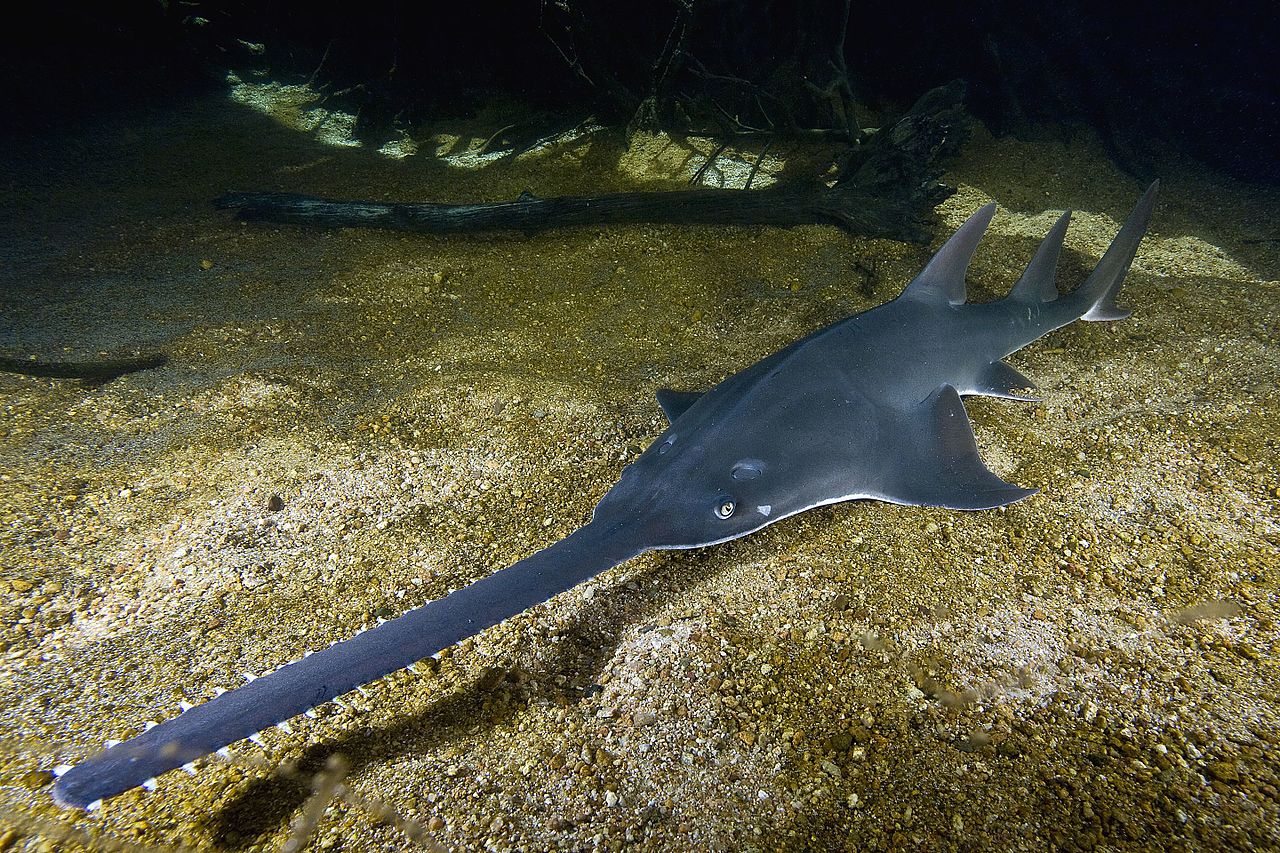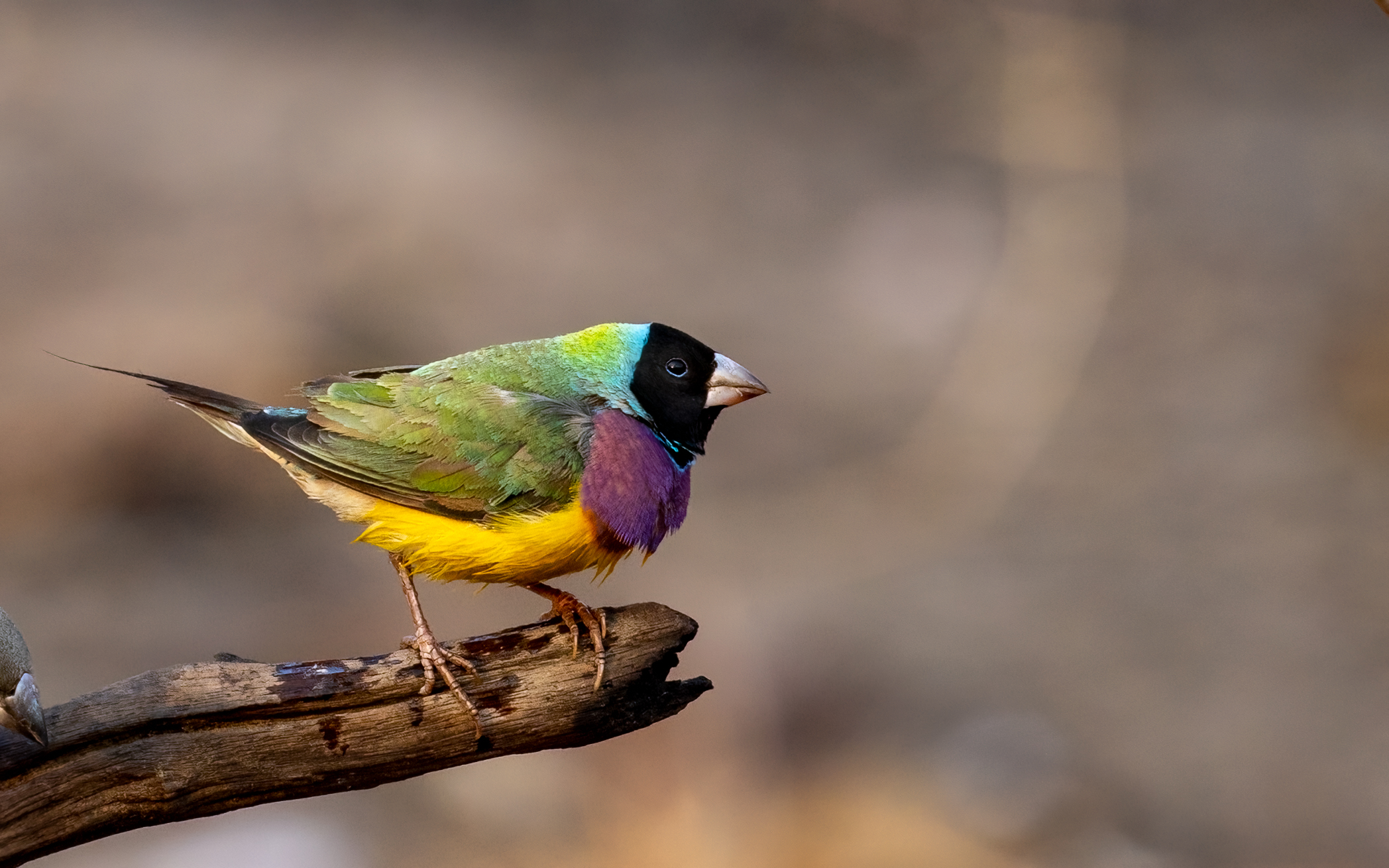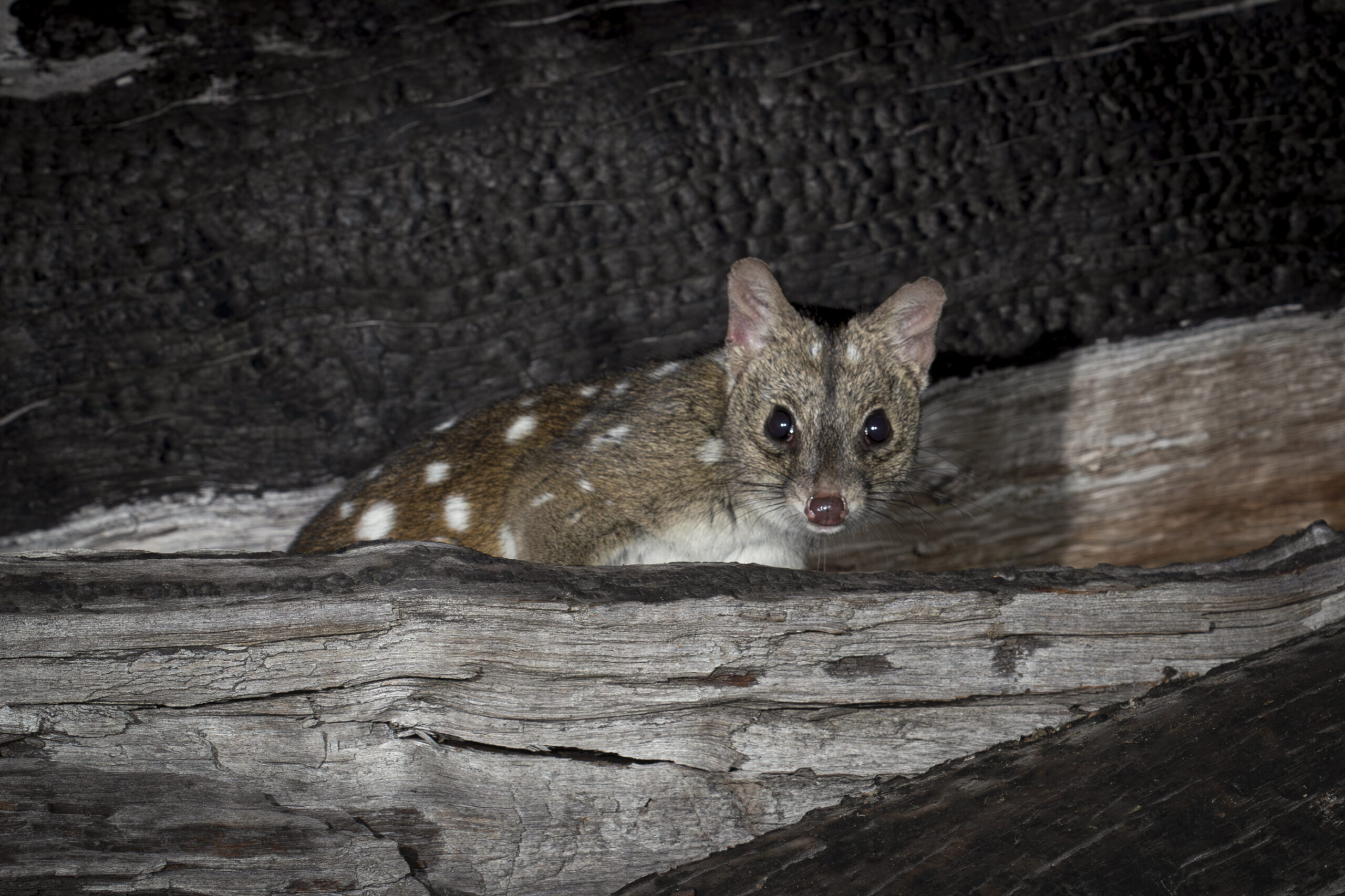| Common name | Western quoll |
| Scientific name | Dasyurus geoffroii |
| Type | Marsupial |
| Diet | Carnivorous |
| Average lifespan | 3 years |
| Size | Males can reach a weight of 1.3kg and females about 900g. |
The western quoll – also known as the chuditch – is one of four quoll species endemic to Australia, and all are threatened. Two more species occur in New Guinea.
Aboriginal name: Chuditch is an anglicised version of djooditj, the Noongar word for the species. It’s also known as atyelpe or chilpa to the Arrernte; kuninka among the Western Desert people; and idnya among the Adnyamathanha of South Australia.
Physical characteristics: The adult western quoll is the size of small domestic cat. Males can reach a weight of 1.3kg and females about 900g. The fur is red-brown with up to 70 large white spots. Like human fingerprints, the spot patterns are specific to each individual.
Habitat: Western quoll use a range of habitats, from jarrah forest and mallee shrubland to eucalypt woodland and desert. They shelter in hollow logs or shallow burrows. The only other quoll species in their current range is the northern quoll (Dasyurus hallucatus) which is smaller.

Diet: Western quoll are primarily nocturnal predators that are most active at dusk (when they hunt). They prey on large spiders, insects and other invertebrates, small lizards, birds, frogs and mammals. They also prey on rabbits in their burrows and scavenge carrion and food scraps around campsites. They eat mostly on the ground, but will climb trees to take prey, including bird eggs and nestlings.
Reproduction: Western quoll are solitary animals, apart from mothers and babies. The young are born between May and September and are fully weaned and independent at about six months. Gestation is about 18 days and females can produce as many as 50 tiny, underdeveloped foetuses (5mm long and weighing 10mg), but only 2–6 survive to attach to the mother’s six nipples. Individuals become sexually mature at 12 months of age and usually do not live beyond three years. The young remain in the mother’s pouch (more of a flap than a pouch) for about 60 days, and are then left in a den while their mother forages.
Cultural significance: The western quoll/chuditch is significant to First Nations people from a wide area. The type of cultural significance varies between regions – they can be important totemic animals and present in Dreaming stories.
Threats: The main threat is land clearing, but foxes and, more recently, feral cats have decimated population numbers.









